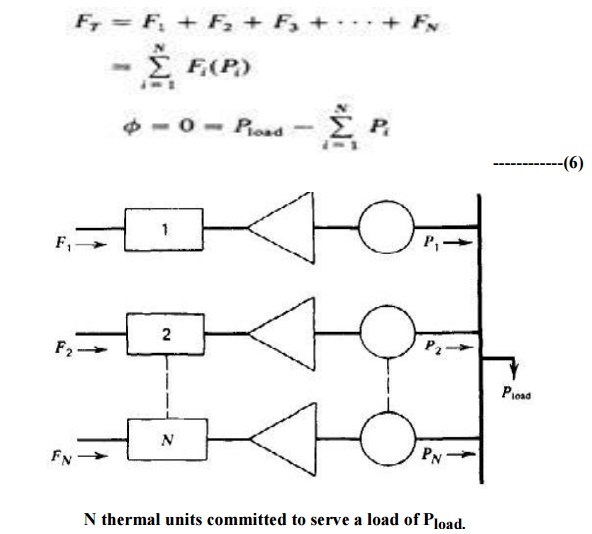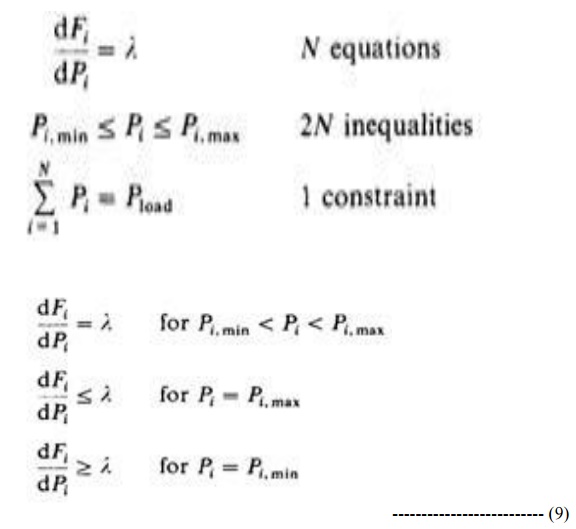Chapter: Power System Operation and Control : Commitment and Economic Dispatch
Economic Dispatch Without Loss
ECONOMIC DISPATCH WITHOUT
LOSS
Ø This system consists of N thermal-generating
units connected to a single bus-bar serving a received electrical load Pload
input to each unit, shown as FI,represents
the cost rate of the unit.
Ø The output of each unit, Pi, is the
electrical power generated by that particular unit. The total cost rate of this
system is, of course, the sum of the costs of each of the individual units.
Ø The essential constraint on the operation of
this system is that the sum of the output powers must equal the load demand.
Ø Mathematically speaking, the problem may be
stated very concisely.
Ø That is, an objective function, FT,
is equal to the total cost for supplying the indicated load.
Ø The problem is to minimize FT subject to
the constraint that the sum of the powers generated must equal the received
load.
Ø Note that any transmission losses are neglected
and any operating limits are not explicitly stated when formulating this
problem. That is,

Ø This is a constrained optimization problem that
may be attacked formally using advanced calculus methods that involve the
Lagrange function.
Ø In order to establish the necessary conditions
for an extreme value of the objective function, add the constraint function to
the objective function after the constraint
function has been multiplied by an undetermined
multiplier.
Ø This is
known as the Lagrange function and is shown in Eq(7)

Ø The necessary conditions for an extreme value
of the objective function result when we take the first derivative of the
Lagrange function with respect to each of the independent variables and set the
derivatives equal to zero. In this case,there are N+1 variables, the N
Ø values of power output, Pi,
plus the undetermined Lagrange multiplier, λ.
Ø The derivative of the Lagrange function with
respect to the undetermined multiplier merely gives back the constraint
equation.
Ø On the other hand, the N equations that result
when we take the partial derivative of the Lagrange function with respect to
the power output values one at a time give the set of equations shown as Eq. 8.

When we recognize the inequality constraints,
then the necessary conditions may be expanded slightly as shown in the set of
equations making up Eq. 9.
Related Topics